semiwork
R.E.P.O. review
I remember the first time I booted up R.E.P.O. vividly. I was drawn by its unusual title and the promise of a gaming experience that deviated from the norm. The initial moments were like stepping into a vibrant world where every detail beckoned exploration. I felt as if the game was an invitation into a universe filled with twists, textures, and surprises that I had never encountered before.
From the outset, the atmosphere radiated a blend of mystery and innovation. The creators of R.E.P.O. seem to have woven a tapestry rich with adventure, challenges, and subtle storytelling techniques. The interface greeted me with a layout that was clean but layered, leaving me with the impression that I was about to embark upon an in-depth personal journey.
Unraveling the Gameplay Mechanics
One of the most striking features that caught my eye in R.E.P.O. was its gameplay mechanics. Instead of following conventional paths, the game provided me with an inventive blend of strategic elements and unexpected twists. Every encounter felt like a challenge crafted with precision, ensuring that no two sessions were ever quite the same.
The control system was intuitive enough to let me dive straight into the action while still offering depth for those who wished to master it. I found myself exploring a series of complex puzzles and dynamic real-time challenges that kept me fully engaged. It was as though the designers had meticulously calibrated each element to test both reflexes and intellect in equal measure.
Diving into the Narrative Universe
R.E.P.O.'s narrative drew me into a story that was neither entirely linear nor confined by traditional storytelling methods. Every character, dialogue, and side quest played a part in crafting an immersive, ever-evolving world. I was particularly taken by moments where subtle hints about the backstory were interwoven with the gameplay, creating layers of intrigue that begged for further exploration.
I appreciated the way the game handled its narrative arcs. The story unfolded gradually as I progressed, with each interaction and discovered detail adding to a larger, intricate tapestry. The shifting perspectives and unexpected character revelations allowed me to see the plot from different angles, making my experience feel like that of a detective slowly piecing together a grand mystery.
Engaging World-Building and Art Direction
The artistic flair of R.E.P.O. is undeniable. I was immediately mesmerized by the color palette and design choices that gave the game a distinct identity. The environments ranged from ethereal landscapes to futuristic urban sprawls, each crafted with an attention to detail that made every area worth a prolonged exploration.
Every location felt like a work of art. The use of lighting, shadows, and textures added both an atmospheric quality and a practical one, as environmental cues were woven into the gameplay. I found it fascinating how each zone possessed the personality of its own, offering different challenges and rewards as I navigated through them.
Exploring the Soundscape and Music
Another aspect that kept me thoroughly engaged was the sound design of R.E.P.O. The auditory experience was rich and immersive, enhancing both the suspense and the exhilaration of different game sections. The background music was not only fitting for each scene but also layered to evoke feelings of anticipation and wonder.
Many moments in the game were punctuated by subtle musical motifs that resonated with significant plot developments. The ambient sounds, ranging from gentle rustling of leaves to the low hum of futuristic machinery, contributed to a soundscape that was both dynamic and full of character. I often found myself pausing to appreciate the imaginative sound design, which added a profound depth to my journey.
Dynamics of Interactive Combat and Challenges
The combat system in R.E.P.O. is a delicate balance between strategy and fast-paced action. I found myself continuously adapting my approach to different opponents and situations. This dynamic encounter system was never monotonous, as it forced me to refine my techniques for every new scenario I encountered.
The challenges were designed to encourage creative thinking as much as reflex-based maneuvers, and each confrontation felt like a unique mini-event in its own right. I particularly enjoyed moments when the game required me to employ unexpected tactics or make split-second decisions, which kept my adrenaline levels high and my engagement unwavering.
Navigating the Puzzle Elements
Throughout my playthrough, R.E.P.O. surprised me with its integration of intricate puzzles that demanded both logic and intuition. Every puzzle was a gem in itself—a perfect blend of challenge and delight. I relished the opportunity to step back from the immediate action and immerse myself in problem-solving scenarios that pleasantly disrupted the pace of pure combat.
Each brainteaser was thoughtfully embedded within the broader narrative, ensuring that even the moments of reflection carried narrative weight. I appreciated how the puzzle sequences invited me to think critically while remaining true to the overall thematic design of the game. The satisfaction derived from cracking a particularly challenging enigma was immensely rewarding.
Investigating the In-Game Economy and Progression
One of the facets that I found thoroughly engaging was the in-game economy of R.E.P.O. Early on, I was introduced to a system that measured progress in terms of resource management, skill upgrades, and strategic reinforcements. It was invigorating to see how every decision, be it minor or significant, influenced my trajectory in the game.
The meticulous planning involved in balancing my in-game assets created a sense of accomplishment that went well beyond simply advancing a storyline. I realized that every upgrade and careful investment had lasting impacts, allowing me to shape a personalized gameplay experience that catered to my individual style. This economic layer added an extra dimension of depth that made each session feel like a nuanced, evolving saga of growth and strategy.
Interacting with a Versatile Cast of Characters
The characters in R.E.P.O. provided the human element that is so vital in any great game. Each character, no matter how minor, exhibited distinctive traits and subtle complexities. I loved how the dialogues were crafted with an attention to authenticity that made every interaction feel personal and meaningful.
There were moments when conversations with in-game figures felt like real-life exchanges, echoing deep emotional undertones or witty banter that lifted the atmosphere. I discovered that character development was not rushed but was instead a slow evolution influenced by every decision I made. The distinct personalities of my allies and adversaries forced me to continuously reevaluate my strategies and maintained my investment in the unfolding narrative.
Exploring the Customization Options and Personal Expression
Customization in R.E.P.O. was one of its standout features. The game offered a robust suite of options that allowed me to tailor my gaming experience to reflect my personal style. From avatar selection to equipment upgrades and even aesthetic choices within in-game environments, I felt empowered to shape my own journey.
This level of creative freedom extended to both cosmetic changes and practical adjustments in abilities and skills. I spent hours fine-tuning my character's skill set and appearance, which in turn made every victory feel distinctly mine. I was given the space to experiment, adapt, and establish a unique identity that resonated with my personal gaming philosophy.
Experiencing the Interface and User Experience
The user interface of the game struck a delightful balance between form and function. I was immediately impressed by how information was presented in a clear yet visually appealing manner. Every element of the interface was designed to complement the immersive quality of the game without detracting from its deeper narrative layers.
Navigating menus, accessing the inventory, and understanding statistical information were all moments of fluid interaction that demonstrated a thoughtful integration of functionality and aesthetics. The learning curve for mastering the interface was gentle yet rewarding, ensuring that I could shift my focus to game mechanics and storytelling without undue distraction.
Venturing Through Expansive Exploration Zones
One of the elements that kept me returning to R.E.P.O. was its expansive and meticulously crafted exploration zones. I vividly recall traversing areas that seemed almost surreal in their beauty, from deserted landscapes reborn with secret treasures to labyrinthine cities bustling with interactive elements. Each zone was like a mystery waiting to be unraveled, enriched with hidden corners and indigenous lore.
As I journeyed deeper into uncharted territory, I discovered that the open-ended design allowed for the deployment of my own strategies. The spatial layout of many levels provided multiple paths for both exploration and confrontation, which made every expedition a bespoke adventure. I found my curiosity rewarded with extra challenges and detailed environmental storytelling that encouraged thorough and methodical exploration.
Capturing Moments of Innovation in Real-Time
R.E.P.O. is a game that continuously surprised me with innovative features tailored to the real-time dynamics of gameplay. There were moments when unexpected events or spontaneous challenges would disrupt the regular rhythm, forcing an immediate recalibration of my tactics. I found these instances thrilling because they imbued every session with a sense of urgency and relevance.
This willingness to break the mold of standard game design meant that no two gameplay sessions were identical. I could feel the pulse of the game shifting in response to my actions and decisions, as dynamic environmental changes and time-sensitive quests unfolded in a manner that made everything feel connected and purposeful. These innovations kept my engagement high and my anticipation always alight.
Analyzing the Underlying Systems and Technical Aspects
Beyond the surface-level engagement lies a robust technical framework that impressed me with its efficiency and adaptability. I spent time exploring some of the more technical aspects of R.E.P.O., from the smooth handling of graphical transitions to the reliability of networked elements when venturing online.
The underlying code and mechanics operated with a precision that translated into consistently stable gameplay, even during resource-intensive moments. I marveled at the developers' commitment to ensuring that lag or technical inconsistencies were minimal, allowing the focus to remain on the immersive experience. The integrity of these systems assured me that every interaction—whether during complex battles or intricate puzzle moments—was seamless and thoughtfully executed.
Relishing the Depth of Side Missions and Hidden Layers
A feature that truly captivated my attention was the abundance of side missions and hidden layers within R.E.P.O. I found that venturing off the main storyline revealed a treasure trove of subsidiary quests, each brimming with its own mini-storylines and nuanced challenges. It was as if the game had multiple stories unfolding in parallel, waiting for me to uncover their secrets.
These ancillary quests were more than just optional distractions; they were intricately linked to the main narrative and often held keys to unlocking deeper parts of the world's lore. The sheer variety of tasks—ranging from solving enigmatic puzzles to engaging in intricate interpersonal exchanges with characters—ensured that every moment I spent exploring the game yielded fresh insights and surprises.
Observing the Evolution of a Dynamic World
Throughout my adventure in R.E.P.O., I observed the world around me gradually evolving in ways that felt organic and highly responsive. The game’s environment was not static; instead, it morphed subtly with the passage of time and as a result of my actions. This dynamic evolution meant that familiar areas would reveal new secrets or challenges upon subsequent visits, keeping the experience delightfully unpredictable.
The presence of time-sensitive events and regularly updated in-game phenomena added a layer of realism that amplified my connection to the virtual world. I appreciated how the game managed to fuse narrative progression with physical transformation of the landscape, ensuring that every visit to a previously explored area felt like I was embarking on a fresh, uncharted segment of my journey.
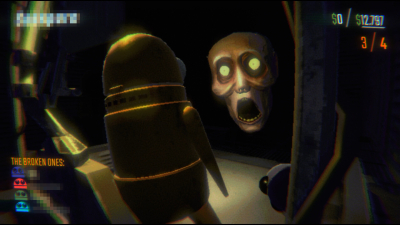
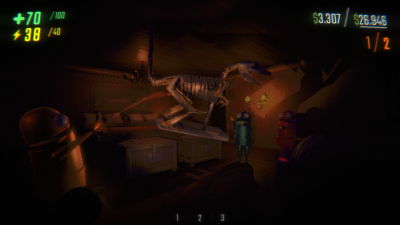
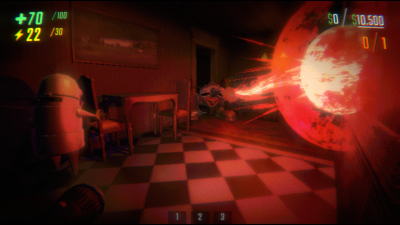
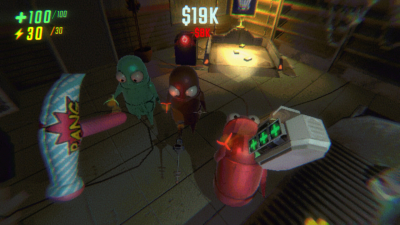
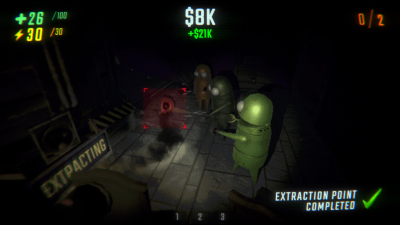


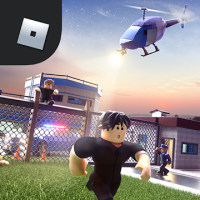


























Leave a comment
Your comment is awaiting moderation. We save your draft here
0 Comments